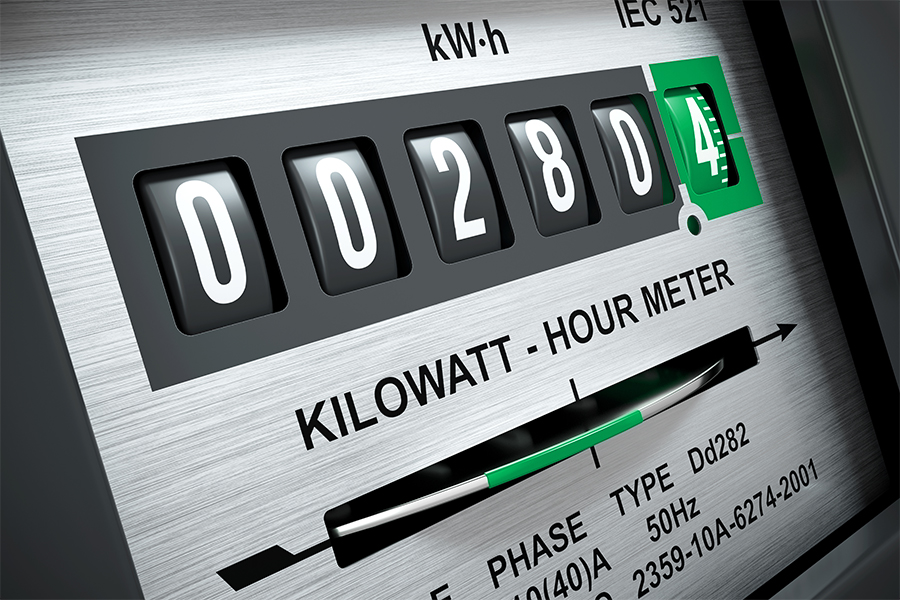What’s the Difference Between kW & kWh?
If you’re like most people, you probably use the terms solar power and solar energy
interchangeably. And that’s perfectly fine in casual conversation.
Scientifically speaking, however, power and energy are actually quite different concepts. And understanding that difference turns out to be absolutely crucial when trying to determine the savings you’ll realize by generating your own electricity from the sun instead of buying it from a utility company.
Kilowatts (kW) vs. Kilowatt-hours (kWh)

Just as length can be measured in either feet or meters, there are various different but equally good ways to measure both power and energy.
One common source of confusion when evaluating a solar system proposal, however, is that the terms typically used to measure electrical power and energy not only sound almost exactly the same; the slight difference between them makes it easy to get confused and reverse their meanings once you do understand the distinction.
Electrical power is typically measured in kilowatts, abbreviated as kW.
Whereas electrical energy is typically measured in kilowatt-hours, abbreviated as kWh.
The amount of power (kW) a system produces at any given time is equal to the amount of energy (kWh) it would produce in an hour. So, even though power is the concept that involves how much is produced in an hour, the term for energy is the one that actually contains the word hour.
The Speed vs. Distance Analogy
It’s helpful to think of power (kW) as analogous to the speed at which a car is traveling and energy as analogous to the distance it actually travels.
Just as power (kW) is the amount of energy (kWh) that would be generated in an hour, speed (miles per hour) is the amount of distance that would be traveled in an hour.
Notice that both power and speed are what scientists call instantaneous measurements. Both the power (kW) generated by a solar system and the speed at which your car is traveling are measurements taken at one moment in time. Whereas both energy (kWh) and distance are measurements taken over an interval of time rather than a single instant.
So, just as we can ask, how much distance your car was driven last month, we can ask how much energy (kWh) it took to run your home last month.
But it makes no sense to ask what the speed of your car was last month—at different times it will have been traveling at different speeds, ranging from zero when it was at rest to whatever maximum speed you wound up driving. And, similarly, once we rigorously distinguish power from energy, it makes no sense to ask how much power (kW) your home used last month because power, like speed, is measured moment by moment.
Understanding Your Solar System Proposal
When looking at a solar system proposal for your home, you’ll get figures for both power and energy. For example, the system you’re looking at might deliver 8.5 kW of power and provide an estimated 1000 kWh of monthly energy.
We can compare the monthly energy (kWh) estimate to how many kWh of electricity your utility company bills you for on average each month and factor in what they charge per kWh to see how much money a proposed solar system that fits your roof (or, if you have the space, a ground-mounted system) will save you.
In most cases, we’re able to provide homeowners with a system that will generate 100% of their electricity needs. But sometimes, either because of a small roof or one that doesn’t get a lot of sun, the best that can be done is to meet a percentage of the homeowner’s monthly energy consumption. But even having less than 100% of their monthly energy needs generated by solar panels, nonetheless, frequently yields substantial savings.
The power (kW) your system will deliver actually varies from moment to moment, depending on how much sun is shining on your panels. The number of kW provided in your proposal will be the maximum power that would be generated if the sun were optimally positioned on each panel. It’s basically a convenient shorthand for the overall size of your system.
Determining the maximum power your system can produce is also a fairly simple matter. All you have to do is multiply the number of panels by the amount of power each will produce under optimal circumstances. And the latter is provided by the manufacturer in watts, where each kilowatt equals 1000 watts. So, for example, if you have 20 solar panels and each is rated 300 Watts, the size of your system will be 20 x 300 watts = 6000 watts = 6 kW of power.
Figuring out the amount of energy (kWh) your solar system will generate annually is, on the other hand, an extremely complicated process since each of the following must be factored in:
- The slope of your roof surfaces
- The directions they face
- Year-round local weather conditions
- Any tree or other objects that will wind up obstructing the sun's light at any time of the day throughout the year